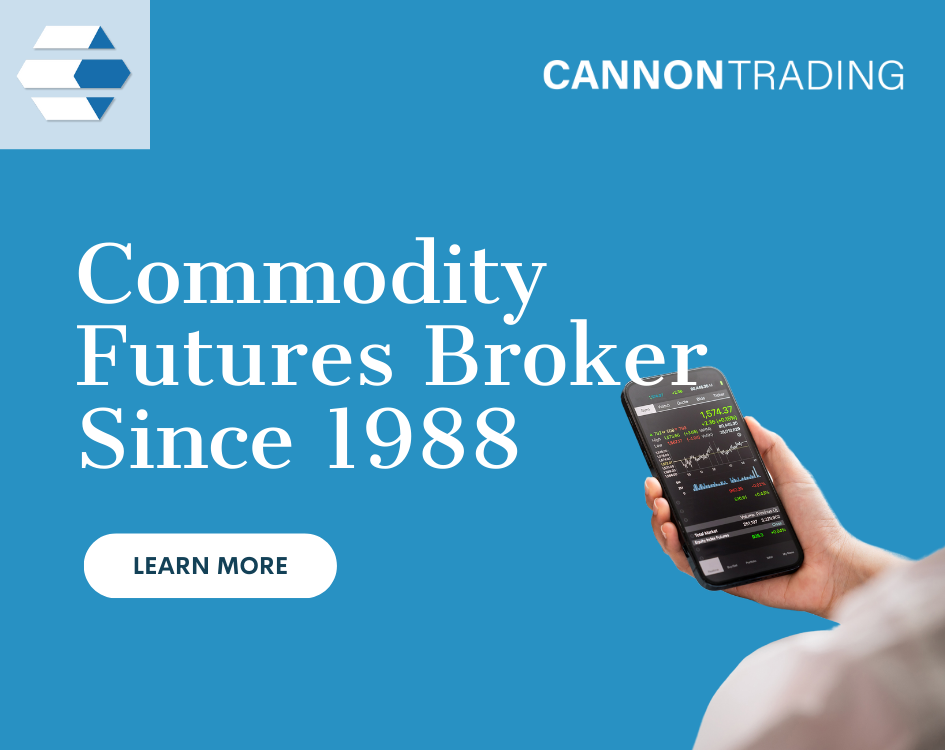|
|
|
|||||||||||||||||||||||||||||||||||||||||||||||||||||||
|
|||||||||||||||||||||||||||||||||||||||||||||||||||||||
|
|
|
|
|||||||||||||||||||||||||||||||||||||||||||||||||||||||
|
|||||||||||||||||||||||||||||||||||||||||||||||||||||||
|
|

|
|||||||||||||||||||||||||||||||||||||||||||||||||||||||||||||||||||||||||||||||||||||||||||||||||||
|
|||||||||||||||||||||||||||||||||||||||||||||||||||||||||||||||||||||||||||||||||||||||||||||||||||
|


|
||||||||||||||||||||||||||||||||||||||||||||||||||||||||||||||
|
||||||||||||||||||||||||||||||||||||||||||||||||||||||||||||||
|

|
|||||||||||||||||||||||||||||||||||||||||||||||||||||||||||||||||||||||||||||||||||||||||||||||||||
|
|||||||||||||||||||||||||||||||||||||||||||||||||||||||||||||||||||||||||||||||||||||||||||||||||||
|
In today’s ever-evolving financial landscape, futures trading remains a vital instrument for hedging risk, maximizing leverage, and speculating on global markets. With complex regulatory standards, rapidly changing markets, and fierce competition, establishing the best futures brokerage in the United States requires much more than just a license and a trading platform. It demands rigorous planning, continuous adaptation, and unwavering dedication to client success. In this expansive overview, we explore what makes the best futures brokers stand out from the pack, the essential considerations that underpin their success, and how Cannon Trading Company rises as a leader among the top rated futures brokers and top rated commodity brokers in the nation.
Creating a truly exceptional futures brokerage involves more than offering access to contracts and exchanges. It necessitates:

Founded nearly 40 years ago, Cannon Trading Company has stood the test of time in one of the most competitive and regulated sectors of the financial industry. Headquartered in Los Angeles and registered with the NFA and CFTC, Cannon has built a sterling reputation that positions it squarely among the top rated futures brokers and top rated commodities brokerage operations in America.
This longevity also reflects stability and trust — key attributes sought by those vetting the best futures brokerage to partner with.
In an industry where one misstep can lead to loss of trust, Cannon Trading’s unblemished record speaks volumes. It’s no wonder they are often listed among the top rated futures brokerage names on industry comparison lists.
Exceptional service isn’t a claim — it’s a reality backed by 5 out of 5-star ratings on TrustPilot. This rating reflects hundreds of satisfied clients who consistently praise the firm’s knowledgeable staff, speed of support, ease of onboarding, and platform diversity.
In a space saturated with brokers making bold promises, few actually deliver consistently. Cannon Trading’s online reviews are a beacon of what the best futures brokers should aspire to.
What truly sets Cannon Trading apart is its wide selection of powerful trading platforms, including:
This suite accommodates everything from discretionary day trading to automated algorithmic systems. Whether a trader needs advanced volume analysis tools or cloud-based charting, Cannon provides a tailored experience — a hallmark of the top rated commodity brokers.
Such platform diversity isn’t just about convenience. It shows the firm’s commitment to ensuring clients can execute their edge — whatever it may be — effectively and affordably.
Cannon Trading partners with multiple clearing firms and Futures Commission Merchants (FCMs) to give clients options on account types, margin structures, and fee models. This flexibility allows clients to scale, hedge, or trade tactically across different market conditions.
It’s this versatility that makes Cannon a frontrunner among the best futures brokers.
Their teams offer proactive margin management, real-time trade monitoring, and platform support — especially during volatile periods, when many brokers falter.
Knowledge is power in futures trading. Cannon Trading stands out as a top rated commodity broker by investing in:
These resources empower clients to make better decisions — whether they’re scalping the E-mini S&P 500 or hedging grain exposure in the commodities pits.
This emphasis on education is why Cannon is frequently chosen by traders looking for the top rated futures brokerage that doesn’t just transact — it teaches.
Cannon also caters to traders interested in managed futures, custom execution strategies, and spread trading. Through curated relationships with Commodity Trading Advisors (CTAs) and the ability to open multi-manager portfolios, Cannon Trading opens the door for advanced investing solutions.
This full-service model is rare and is a primary reason Cannon is a standout among the top rated commodity brokers in the U.S.
Unlike many brokers who shroud their pricing in mystery, Cannon offers fully transparent pricing models with competitive commission structures and no hidden fees. This openness — paired with the ability to choose from multiple FCMs — is a critical differentiator and a primary consideration for those comparing the best futures brokers.
Whether it’s high-volume traders negotiating lower per-contract rates or new traders looking for fee clarity, Cannon delivers.
The United States is home to the most developed and complex futures markets in the world. Naturally, it also hosts some of the best futures brokerage firms globally. But within this competitive environment, Cannon Trading Company stands tall by checking every box:
The result? A brokerage that doesn’t just serve clients — it partners with them.
Becoming the best futures brokerage isn’t an accident. It’s a result of deliberate strategy, expert staff, regulatory excellence, and a laser-focus on client success. Cannon Trading Company exemplifies all of these attributes.
In an industry where brokers come and go, Cannon Trading Company’s enduring presence and stellar reputation make it a go-to name among the top rated futures brokers and top rated commodity brokers. For traders seeking a firm that offers both depth and flexibility, education and execution, integrity and innovation — Cannon Trading Company is not just an option, but a benchmark.
As the U.S. continues to dominate the global derivatives landscape, Cannon’s leadership will remain central to helping clients hedge, speculate, and grow in a dynamic world.
Ready to start trading futures? Call us at 1(800)454-9572 (US) or (310)859-9572 (International), or email info@cannontrading.com to speak with one of our experienced, Series-3 licensed futures brokers and begin your futures trading journey with Cannon Trading Company today.
Disclaimer: Trading Futures, Options on Futures, and retail off-exchange foreign currency transactions involve substantial risk of loss and are not suitable for all investors. Past performance is not indicative of future results. Carefully consider if trading is suitable for you in light of your circumstances, knowledge, and financial resources. You may lose all or more of your initial investment. Opinions, market data, and recommendations are subject to change at any time.
Important: Trading commodity futures and options involves a substantial risk of loss. The recommendations contained in this article are opinions only and do not guarantee any profits. This article is for educational purposes. Past performances are not necessarily indicative of future results.
This article has been generated with the help of AI Technology and modified for accuracy and compliance.
Follow us on all socials: @cannontrading
When navigating the complex and fast-paced world of futures trading, choosing the right broker can be the difference between long-term success and costly missteps. The best futures brokers don’t just provide access to markets—they deliver performance, reliability, and client-focused service. In a market where traders need every edge, selecting the best futures brokerage is a strategic decision that goes beyond commissions and technology.
As a trader, whether you’re managing a diversified commodity portfolio or scalping market volatility, you’re likely looking for top rated futures brokers who can offer a blend of deep industry experience, regulatory credibility, advanced trading platforms, and client-centered service. This is where Cannon Trading Company shines—not just as a viable contender but as a top-rated commodities brokerage with nearly four decades of operational excellence.

Founded in 1988, Cannon Trading Company has become one of the most enduring and respected names among top rated futures brokers in the United States. With nearly 40 years of uninterrupted service, Cannon Trading has weathered market cycles, regulatory changes, technological revolutions, and the digital transformation of the financial services industry.
Their longevity is not by chance. It is rooted in a relentless pursuit of excellence and adaptability. While some firms operate in reaction to market conditions, Cannon Trading is proactive—constantly evaluating its services, expanding its platform offerings, and optimizing client experiences.
When traders research the best futures brokers, one of the key indicators they often seek is industry tenure. A firm like Cannon Trading, with decades of proven performance, assures traders of stability and expertise—an essential edge in an unpredictable market landscape.
Any claim to being among the top-rated commodity brokers is incomplete without impeccable regulatory standing. Cannon Trading Company boasts a pristine record with U.S. futures regulators, including the Commodity Futures Trading Commission (CFTC) and the National Futures Association (NFA). This clean record is not merely a badge of honor—it is a testament to the company’s commitment to integrity, compliance, and transparency.
This kind of regulatory fidelity elevates Cannon Trading above many competitors who may offer flashy tools but lack the trustworthy foundation required for long-term engagement. For clients who take compliance and security seriously, choosing a top-rated futures brokerage like Cannon Trading ensures peace of mind.
In today’s digital era, online reputation matters more than ever. Independent reviews are often more insightful than promotional materials. Cannon Trading Company has earned consistent 5 out of 5-star ratings on TrustPilot—a rare feat in the brokerage industry.
Clients praise the firm for personalized service, fast response times, and trading desk professionals who understand the nuances of both retail and institutional trading. These reviews are not marketing hyperbole—they are public testimonies from real users that back Cannon’s position among the best futures brokers in the country.
Whether you’re a beginner who needs handholding or a veteran seeking high-frequency trading solutions, Cannon Trading’s tailored approach to customer support ensures you’re not just a number in a CRM database—you’re a partner in success.
One of Cannon Trading’s most distinctive features as a top-rated futures brokerage is its vast selection of world-class trading platforms. Unlike many brokers that lock you into one or two interfaces, Cannon empowers you to choose from a broad spectrum, including:
This flexibility enables traders to match their personal trading style with the tools they need. Whether you’re looking for advanced charting, market depth visualization, algorithmic trading support, or mobile-friendly execution, Cannon Trading delivers.
This breadth of choice alone elevates Cannon Trading to the upper echelon of top-rated commodity brokers. Personalized trading is no longer a luxury—it’s a necessity, and Cannon ensures you’re equipped.
Cannon Trading’s support team isn’t composed of outsourced reps reading scripts. Instead, the company invests in experienced brokers and support staff who know the markets. Their team includes licensed professionals who can assist with strategy, risk management, platform configuration, and more.
This level of expertise is what separates Cannon from low-cost alternatives. Their team doesn’t just solve problems—they anticipate them. They don’t just process orders—they guide you through market dynamics, trading psychology, and system performance. It’s a hands-on approach that defines what the best futures brokerage should provide.
Cannon Trading doesn’t lure clients with deceptive low pricing that later explodes with hidden fees. Instead, the firm maintains a transparent fee structure that caters to traders of all types—from high-volume intraday traders to hedgers and long-term position holders.
Account minimums are reasonable, margins are competitive, and the firm offers both self-directed and broker-assisted services without forcing traders into one-size-fits-all models.
This balanced approach makes Cannon Trading not only one of the top-rated futures brokers but also one of the most honest and accessible futures brokerages in the U.S.
Risk is inherent in futures trading, but proper management is where traders gain the edge. Cannon Trading Company takes risk education seriously. From free webinars to comprehensive articles and one-on-one consultations, Cannon provides a robust educational infrastructure for clients.
Some of the key educational tools include:
Cannon’s emphasis on education demonstrates a client-first mentality—another trait that places it high on the list of best futures brokers available to U.S.-based traders.
Whether you’re a day trader seeking tight spreads and rapid execution, or a commodity hedger managing physical positions, Cannon Trading can customize a brokerage solution to fit your needs.
This bespoke brokerage model is what sets Cannon apart from most top-rated commodities brokerages, many of which cater exclusively to either the institutional or retail segment. Cannon manages to serve both ends of the spectrum without compromising quality.
In today’s algorithmic trading environment, execution speed can make or break profitability. Cannon Trading offers:
These features aren’t just for show—they represent real competitive advantages that place Cannon Trading among the best futures brokers for speed, precision, and strategy execution.
Over the years, Cannon Trading has earned accolades from clients, regulators, and industry peers alike. The firm has been invited to participate in trading expos, industry panels, and educational summits, further cementing its position as a top-rated futures brokerage and thought leader.
Their content is frequently cited in futures forums, educational blogs, and trading academies—another validation of the trust and authority Cannon Trading has cultivated in its nearly 40 years of operation.
While many brokers offer competitive rates or sleek platforms, very few combine the full suite of advantages that Cannon does:
| Feature | Cannon Trading Company | Average U.S. Futures Broker |
| Years in Business | ~40 | 10–15 |
| Platform Options | 10+ | 1–3 |
| TrustPilot Rating | 5.0 (multiple ratings) | 3.5–4.5 |
| Regulatory Standing | Clean record with CFTC/NFA | Mixed |
| Broker-Assisted Trading | Available | Often unavailable |
| Custom Solutions | Yes | Limited |
| Education & Risk Tools | Extensive | Minimal |
As this comparison illustrates, Cannon doesn’t just match its competitors—it exceeds them across nearly every meaningful metric.
The title of best futures brokerage isn’t one that can be self-proclaimed—it must be earned through decades of diligence, innovation, client satisfaction, and transparency. Cannon Trading Company exemplifies all of these values. Its nearly 40-year legacy, stellar regulatory history, highly rated client reviews, and unparalleled platform diversity set it apart as a consistent leader.
For any trader looking for the best futures brokers in the U.S., Cannon Trading deserves a place at the top of the list—not just because of what they’ve done, but because of what they continue to do for their clients every day.
Ready to start trading futures? Call us at 1(800)454-9572 (US) or (310)859-9572 (International), or email info@cannontrading.com to speak with one of our experienced, Series-3 licensed futures brokers and begin your futures trading journey with Cannon Trading Company today.
Disclaimer: Trading Futures, Options on Futures, and retail off-exchange foreign currency transactions involve substantial risk of loss and are not suitable for all investors. Past performance is not indicative of future results. Carefully consider if trading is suitable for you in light of your circumstances, knowledge, and financial resources. You may lose all or more of your initial investment. Opinions, market data, and recommendations are subject to change at any time.
Important: Trading commodity futures and options involves a substantial risk of loss. The recommendations contained in this article are opinions only and do not guarantee any profits. This article is for educational purposes. Past performances are not necessarily indicative of future results.
This article has been generated with the help of AI Technology and modified for accuracy and compliance.
Follow us on all socials: @cannontrading

|
||||||||||||||||||||||||||||||||||||||||||||||||||||||||||||||
|
||||||||||||||||||||||||||||||||||||||||||||||||||||||||||||||
|


|
||||||||||||||||||||||||||||||||||||||||||||||||||||||||||||||
|
||||||||||||||||||||||||||||||||||||||||||||||||||||||||||||||
|

|
|
||||||||||||||||||||||||||||||||||||||||||||||||||||||||||||||||
|
||||||||||||||||||||||||||||||||||||||||||||||||||||||||||||||||
|